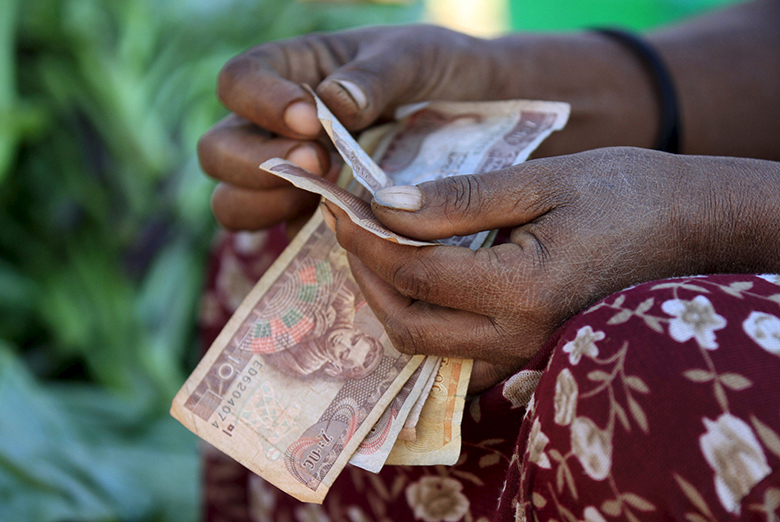Fintechs have helped make financial services available to people that banks have long struggled to reach, but this has come at a price.
Default rates among digital borrowers in Tanzania, for example, have reached 31% and in Kenya 12%, according to a survey by the Consultative Group to Assist the Poor (CGAP), a global partnership of more than 30 development organizations housed within the World Bank.
This is making a bad situation in Africa considerably worse.
Loans that are not repaid get the borrower blacklisted, blocking people from taking loans on more manageable terms. Instead of being a stepping stone into the formal banking system, digital credit has become another obstacle blocking the path into it.
| Rupert Scofield, Finca International |
Rupert Scofield, president, CEO and co-founder of Finca International – a non-profit, microfinance organization – says: “Fintechs have taken an increased interest in microfinance in recent years. Some have introduced new products that offer instant loans, but these often come with very high interest rates.
“The companies behind these products may have good intentions, but the high interest and default rates are no less damaging to low-income customers.”
Scofield says Finca wants to maintain a social focus, designing products that are socially responsible and valuable while offering a high level of transparency.
With this in mind, in October Finca launched Finca Forward, a sandbox allowing fintechs and other developers to experiment with the development of a more sustainable generation of microfinance products.
Savings and credit
While mobile money has grown rapidly in east Africa, it serves as a complement to, rather than a substitute for, traditional banking services, says Scofield. Now, he wants microfinance institutions (MFIs) to adopt mobile technologies centred on savings and credit.
“The path to 100% financial inclusion will require collaboration between fintechs and banks, and we believe Finca Forward can help make that happen,” says Scofield.
| Greta Bull, CGAP |
Greta Bull, CEO of CGAP, believes part of the challenge is around the scalability of products designed with vulnerable borrowers in mind.
“Microfinance is high touch – you go deep with your clients,” she says. “In many cases, they have no credit record, so there is a lot of due diligence and it doesn’t scale that well.
“The challenge is not necessarily about migrating people from the informal sector to banks, it is about bringing banking services to the mass market, through new commercial alliances that make this a more financially viable proposition.”
Expanding beyond the profitable businesses of credit and remittances will require greater depth, built on top of the scalability of digital payments, says Bull.
“Companies like Alibaba have built end-to-end solutions for financial services in China, based on data generated through its e-commerce platform,” she says.
“Alliances between platform providers like M-Pesa and fintechs or banks like Commercial Bank of Africa will help build that depth over time. They have very different core businesses, so are not necessarily competing directly over customers.”
Bull suggests lenders and regulators should consider developing low-value “wallet” accounts, with limits on what can be held or sent, and relaxed know-your-customer requirements to make them more affordable.
“This is what we have seen happen in east Africa, which has enabled different kinds of providers to enter the market, particularly in the payments space,” she says.
Regulatory burden
Another approach is to lessen the regulatory burden for financial-service providers serving low-income clients.
In Peru, there is a tiered regulatory structure for MFIs, with progressively higher requirements as more sophisticated services are offered.
“This has enabled microfinance to develop across a wide spectrum of institutional types, serving different segments of the low-income market,” adds Bull.
Despite advocating innovation through the creation of Finca Forward, Scofield sounds a note of caution.
“Financial-service innovation is critical, but it is equally important that we don’t move too fast,” he says.
“MFIs must fully understand the technologies they are adopting, and clients must understand the terms and conditions of the financial products they are using. If the market becomes too accepting of the latest innovation trend, problems may arise from things like high-interest nano loans.”
It is unlikely that we will see markets such as Uganda evolve into full digital banking anytime soon, adds Scofield.
“Cash is too essential to these economies, as India’s experiment shows,” he says. “There is also an issue of trust for people in emerging markets when it comes to digital technology, not to mention barriers associated with digital illiteracy.”


 Signal2forex.com - Best Forex robots and signals
Signal2forex.com - Best Forex robots and signals




